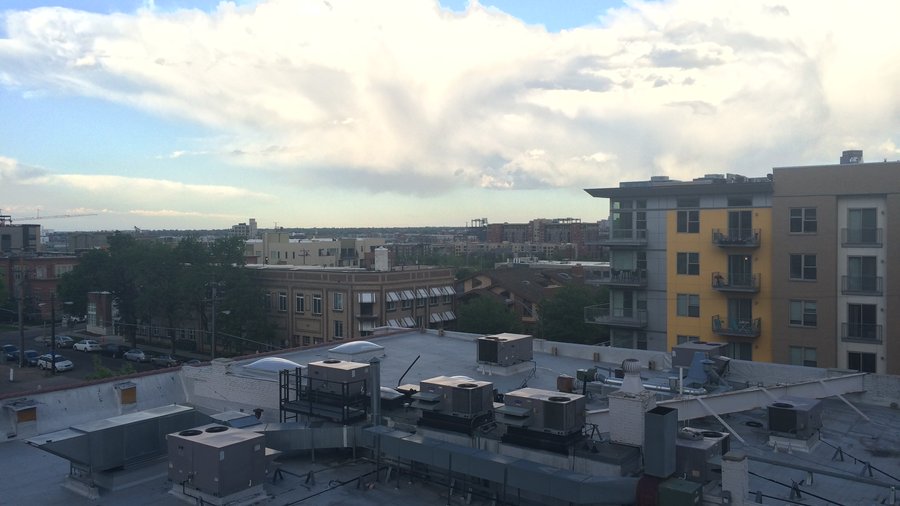What’s often referred to as “The Highlands” is actually two distinct Denver neighborhoods.
One is Highland, stretching from Interstate 25, north to 38th Avenue, south to Speer Boulevard and west to Federal Boulevard. The other is West Highland, continuing along the same north/south boundaries farther west out to 29th Avenue.
This week, our tour is focusing on the Highland area. We’ll check out West Highland next week.
SLIDESHOW: Click the image for a photo tour of lower Highland, also called LoHi.
Today, Highland is one of Denver’s most popular neighborhoods, but originally no one wanted to live there.
History
In 1858, William Larimer had just founded Denver City. He and real estate developer D.C. Collier wanted to branch out from it and their other new town, Auraria, so they claimed they land on the west bank of the Platte River as well. But people weren’t as eager to move up the hill as they originally hoped and developers could hardly give the land away.
Then, in May 1864, everything changed. The towns of Denver and Auraria were both settled on the bed of Cherry Creek, which seemed almost dry at the time. But a spring storm would hit on the evening of May 19 that would raise those water levels higher than anyone ever imagined was possible. Buildings were washed downstream and an estimated 15-20 people died in the floods.
After that, people were a lot more willing to move up the hill. And accessibility soon followed: the 15th Street Bridge and streetcars made getting back and forth from Denver and Auraria to Highland easier and quicker.
Highland began to flourish. But the city soon realized it would be difficult to continue independently and residents voted to annex it into Denver.
Colorado, and Denver specifically, has historically had a strong Italian community. In fact, in the 1920s just over 20 percent of Denver’s population was made up of Italians. And Highland was Denver’s “Little Italy.”
There were Italian grocery stores and bakeries, community bread ovens, schools, and the Mount Carmel Catholic Church, established in 1891 for the Italian community and still serving the Highland Catholic population today.
Although the percentage of Italian-Americans is nowhere near what it was, there are still certainly pockets filled with people of proud Italian heritage, especially in the older Highland neighborhoods.
The area has also been known to have large Irish and Hispanic populations.
LoHi today
In 2006 a pedestrian bridge was built that connected Highland to the rest of downtown, once again making the area more accessible. It’s now a popular area for young people wanting to live close to downtown while still feeling like they are in their own community.
The city of Denver's population spiked to 682,545 in 2015, the ninth-largest increase in the nation — up from about 620,000 in 2011. And the real estate trend in Highland echoes a story familiar in Denver right now — as the population booms, an upward trend in real estate and housing market prices follows suit.
The home prices in Highland paint the picture: In June 2011, the median sales price for all residential properties hovered around $300,000. Fast forward to May 2016, and the price has risen by 44.7 percent, to $434,400 — a price jump of $134,000, according to real estate website Trulia.com.
Capitalizing on the growth, the Highland neighborhood has also seen its fair share of new, trendy businesses and restaurants. Italian and pizza eatery Bar Dough, for example, opened this past year, and is one of the hottest new restaurants in Denver, according to Zagat. A closed-down, old auto garage will soon house a new, wilderness-themed brewery at 29th and Zuni streets. And Phoenix restaurant chain Postino WineCafé last August opened its first LoHi location.
Other local favorites include Highland Tap & Burger, Teatulia Tea Bar, Wooden Spoon Cafe & Bakery, Black Eye Coffee Shop and Williams & Graham, named one of the 30 best bars in the world. Overall, Highland has 58 restaurants and about 225 businesses total.
It's also home to Little Man Ice Cream, owned by local developer Paul Tamburello. Tamburello is often called the "godfather of Highland" for his role transforming the area beginning in the 1990s. He's the man behind Root Down, a once-shuttered gas station at West 32nd Avenue between Shoshone and Tejon streets turned trendy eatery, as well as the redevelopment of the Olinger Mortuary complex, which houses Little Man Ice Cream and popular eateries Lola and Linger. In fact, this idea of creating new businesses that still reflect the old building they are in seems to be the theme of the neighborhood.
When the business boom began, the area decided to rebrand itself. Most of Highland is now more commonly referred to as LoHi, or the Lower Highlands, a new name given to reflect the resurgence.
Highland continues to be a hub of development today. A 78,639-square-foot office building called "The Lab" at 2420 17th St. ( much of which will be leased by WeWork) just wrapped up construction last year, and the neighborhood will be home to a new, 165-room luxury hotel being planned by Starwood Hotels & Resorts.
Old retail space at West 32nd Avenue and Tejon Street will be cleared out to make room for a five-story luxury apartment complex, and a 90,000-square-foot mixed-use development is planned for 1615 Platte St., with construction beginning this summer.
Other projects include a 300-unit apartment complex at 18th and Central streets, as well as a new Fairfield Inn and Suites at Wyandot Street and West 27th Avenue.
Bradford Real Estate, located at 2356 W. 32nd Ave. in a house that was once targeted for demolition, won the "Back to the Future" award in the Mayor's 2016 Design Awards for its "first-class renovation" that included solar panels and an electric vehicle charging station.
KUSA-9News' Amanda Kesting contributed to this story.






